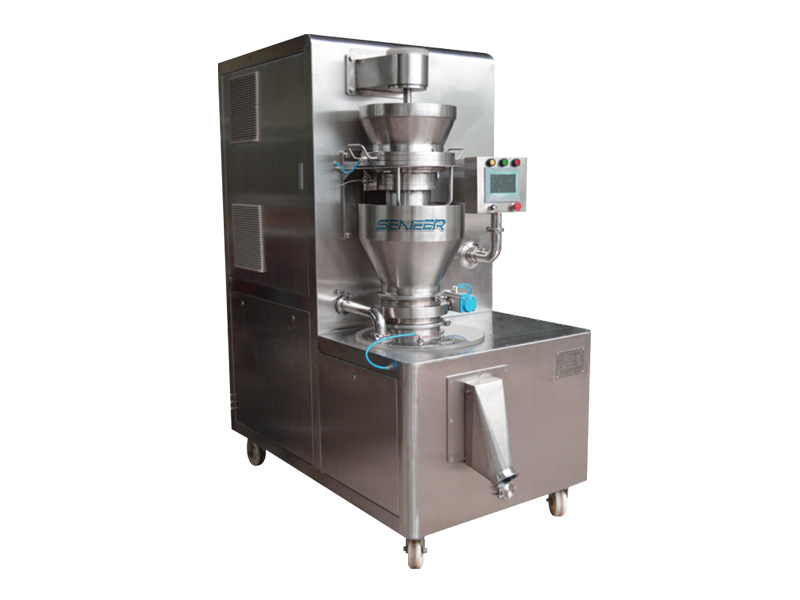Introduction:
An extruder and spheronizer machine is a combination of two distinct, yet complementary equipment used to form uniform, spherical-shaped granules from a wide range of materials such as powders, pellets, crystals, and other materials. Extruders and spheronizers are commonly used in industries such as pharmaceuticals, food and beverage, chemical, and cosmetic for the production of evenly sized and shaped granules that facilitate their handling, packaging, and ultimately, their efficacy.
This article provides an in-depth guide on extruder and spheronizer machines, their working principles, applications, advantages, and disadvantages.
Background:
Extrusion involves forcing a mixture of materials through a die of a given shape to produce a continuous, uniform product. The extruded product is then cut into smaller units of the desired length. Spheronization, on the other hand, is a process by which extruded materials are transformed into perfectly round or spherical-shaped granules. Spheronization is achieved by subjecting extruded materials to the shearing and agitation forces in a spheronizer machine that converts them into small, uniformly sized spheres. Extruder and spheronizer machines are often used in tandem to produce pellets with a narrow size distribution and increased uniformity.

Working Principle:
Extruder machines work by forcing materials through a die that imparts a given shape to the extruded product. The extruded product is then further processed to ensure that it has the desired length and size. The extrusion process can be carried out using two distinct methods, namely hot and cold extrusion. Hot extrusion involves using high temperatures to facilitate the flow of materials through the die, while cold extrusion employs lower temperatures.
Spheronization is achieved by subjecting the extruded product to shear stress and resulting in compression in a spheronizer machine. The spheronizer machine comprises a rotating drum with a precise pattern of screen inserts that exert compression forces on the material bed. As the drum rotates, the particles are gradually rounded into uniform spheres of the desired size. The spheronizer machine can operate continuously or intermittently, depending on the specific application.
Applications:
The combined use of an extruder and spheronizer machine is a preferable method for producing pellets with narrow size distribution and increased uniformity. Several industries rely on this technology for the production of different types of pellets. Below are some of the common applications of extruder and spheronizer machines:
- Pharmaceutical industry: Extruder and spheronizer machines are used in the pharmaceutical industry to produce uniform pellets. The pellets can be used as a carrier for drugs or as standalone products, including controlled-release formulations.
- Food and beverage industry: Extruder and spheronizer machines produce uniformly sized pellets in the food industry. These pellets can be used for the production of snack foods, breakfast cereals, and pet foods.
- Chemical industry: The chemical industry uses extruder and spheronizer machines to produce granules for use as catalysts, fertilizers, and other chemical compounds.
Advantages:
- The use of extruder and spheronizer technology offers several advantages, including.
- Increased uniformity: Extruder and spheronizer machines produce pellets of uniform size and shape, which enhances their handling and processing.
- Controlled-release formulations: The pellets produced using extruder and spheronizer machines can be used to produce controlled-release formulations that slowly release drugs or other active agents over an extended period.
- Increased solubility: The spherical shape of the pellets increases their surface area, making them more soluble in liquids.
Disadvantages:
Although extruder and spheronizer machines offer several advantages, they have a few drawbacks, namely:
- High capital cost: Extruder and spheronizer machines are costly to acquire and maintain.
- High energy consumption: The extrusion and spheronization processes are energy-intensive, resulting in high operating costs.
Conclusion:
Extruder and spheronizer machines are widely used in various industries for the production of uniform pellets with the desired size and shape. This technology provides several advantages, including increased uniformity, controlled-release formulations, and increased solubility. However, it comes with some drawbacks, such as high capital costs and high energy consumption.










